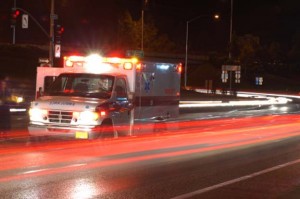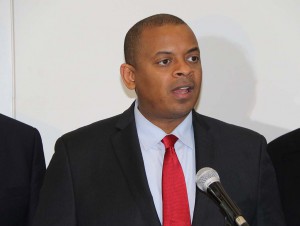
Nearly 700 people are expected to die on America's roads during Christmas and New Year's, according to a new report.
With America’s roadways expecting an influx of holiday travelers for Christmas and New Year’s, safety is top of mind with nearly 700 traffic fatalities expected to occur during the two weekends, according to a new report.
The National Safety Council estimates that 314 people will die on U.S. roads during the three-day Christmas period as well as an additional 364 deaths will happen during the three days of New Year’s.
The council also estimates 37,200 may be seriously injured on the roads during the Christmas holiday, and another 41,900 during the New Year’s holiday.
“Safety is the greatest gift you can give, not only to your family but to those who share the roads with you,” said Deborah A.P. Hersman, president and CEO of the National Safety Council. “Paying attention, slowing down and driving sober can ensure you and your fellow travelers make it home for the holidays.”
(NHTSA targeting 1 million FCA vehicles over shifter rollaway risk. For more, Click Here.)
The two high-profile driving periods cap what has been a tough year for drivers on America’s roadways. Preliminary NSC estimates indicate traffic deaths are up significantly through the first 10 months of 2016 compared with the same time period in 2015.
Traffic deaths in the U.S. jumped 10.4% in the first six months of 2016 compared to the same period in 2015.

U.S. Transportation Anthony Foxx reminds that using your safety belt will dramatically improve your chances of surviving an accident.
The data, which has not been finalized, reveals that an estimated 17,775 people died in vehicle accidents in the first half of this year, while there were just 16,100 reported fatalities for the same period in 2016. The preliminary 2016 numbers are the highest since the first half of 2008.
The results are in spite of the fact that seat belt usage is at an all-time hight, NHTSA reports.
The new data – drawn from a large-scale observational study conducted by NHTSA in June 2016, shows daytime belt use (drivers and right-front passengers of passenger vehicles from 7 a.m. to 6 p.m.) reached 90.1%, a statistically significant increase from 88.5% in 2015.
(To see more about U.S. new vehicle sales expectations falling for 2017, Click Here.)
The study, known as the National Occupant Protection Use Survey (NOPUS), is the only survey that provides nationwide probability-based observed data on seat belt use in the United States. The NOPUS also provides data on other types of restraints, such as child restraints and motorcycle helmets, and driver electronic device use.
“The best way folks can protect themselves in their cars is by wearing a seat belt,” said U.S. Transportation Secretary Anthony Foxx in a statement. “Whether you’re a driver or passenger, in the front seat or back, the simple act of wearing a seat belt significantly reduces the risk of fatality and major injury in a crash.”
The NSC offers addition safety tips, including:
- Make sure children are restrained in safety seats that are appropriate for their height, age and weight
- Designate an alcohol and drug-free driver or arrange alternate transportation
- Get plenty of sleep and take regular breaks to avoid fatigue
- Never use a cell phone behind the wheel, even hands-free
- Do not allow teens to drive with their friends. A single young passenger can increase a teen driver’s fatal crash risk 44%.
(GM set to reveal complete makeovers of Chevy Traverse, GMC Terrain at Detroit Auto Show. Click Here for a preview.)
The group also recommends getting to know more about your vehicle’s safety systems, specifically how they’re respond to difference situations, or perhaps more importantly, what they may not do.
